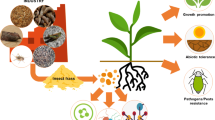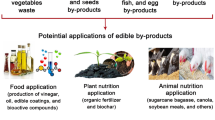Abstract
The composition and structure of 300 enset gardens from 10 different locations in Sidama were examined. Average size of the gardens was 0.74 ha. The gardens are composed of mixtures of various named enset varieties and different groups recognisable on the basis of ‘sex’ (male and female) and use (cooking and processing). The gardens exhibit high diversity, with a given garden containing up to 24 varieties (mean = 8.2). However, the components are not represented equally. Typically, the gardens consisted of one or two very abundant varieties and a much larger number of less common ones. Enset gardens are dynamic because the number and composition of varieties and different types changed from garden to garden, from location to location and across time. Their composition, structure and dynamics have been influenced by human, socio-economic factors (farm size, land per capita, cropping patterns and size of livestock), temporal circumstances and landscape elements (elevation) in which they are found. The nature, characteristics, organization and functions of Sidama enset gardens are outlined and the importance of maintaining mixtures of varieties for farmers is discussed.
Similar content being viewed by others
References
Admasu T, Struik PC (2001) Enset (Ensete ventricosum (Welw.) Cheesman) kocho yield under different crop establishment methods as compared to yields of other carbohydrate-rich food crops. Netherlands J Agric Sci 49:81–94
Admasu T, Struik PC (2002) Analysis of enset (Ensete ventricosum) indigenous production methods and farm-based biodiversity in major enset growing regions of southern Ethiopia. Expl Agric 38:291–315
Bizuayehu T (2008) On Sidama folk identification, naming and classification of cultivated enset varieties. Genet Resour Crop Evol. doi:10.1007/s10722-008-9334-x
Bizuayehu T, Ludders P (2003) Diversity and distribution patterns of enset landraces in Sidama, Southern Ethiopia. Genet Resour Crop Evol 50:359–371
Boster JS (1984) Selection for perceptual distinctiveness: evidence from Aguarina varieties of Manihot esculenta. Econ Bot 39:310–325
Brown JH (1984) On the relationship between abundance and distribution of species. Am Nat 124:255–279
Browning JA, Frey KJ (1969) Multiline varieties as a means of disease control. Ann Rev Phytopathol 7:355–382
Brush SB, Carney HJ, Human Z (1981) Dynamics of Andean potato agriculture. Econ Bot 35(1):70–88
Cheesman EE (1947) Classification of the bananas. Kew Bull 2:97–117
Clawson DL (1985) Harvest security and intra-specific diversity in tropical agriculture. Econ Bot 39(1):56–67
Hames R (1983) Monoculture, Poly-culture, and poly-variety in Tropical Forest Swidden Cultivation. Hum Ecol 11(1):13–34
Johannessen CL (1969) The dispersal of Musa in central America: the domestication process in action. Ann Assoc Amer Geogr 60:393–413
Muluneh T, Becker HC, Maass BL (2007) Diversity, distribution and management of yam landraces (Dioscorea spp.) in Southern Ethiopia. Genet Resour Crop Evol. doi:10.1007/s10722-007-9219-4
Shank R, Chernet C (1996) http://www.africa.upenn.edu/eue_web/enset96.htm. A linear model for predicting enset plant yield and assessment of kocho production in Ethiopia
Shiegeta M (1997) Essence of indigenous sustainability and diversity: ensete system. In: Fukui K, Kurimoto E, Shiegeta M (eds) Ethiopia in broader perspectives. Papers of 13th international conference of Ethiopian studies, vol I–III. Shokodo Book Sellers, Kyoto
Smeds H (1955) The enset planting culture of eastern Sidamo, Ethiopia. Acta geographica 13(4)
Sorenson TA (1948) A method of establishing groups of equal amplitude in plant sociology based on similarity of species content, and its application to analysis of the vegetation on Danish commons. K dan Vidensk Selsk Biol Skr 5:1–34
Taye B (1984) Evaluation of some Ensete ventricosum clones for food yield with emphasis on the effects of length of fermentation on carbohydrate and calcium content. Trop Agric (Trinidad) 61:111–116
Westphal E (1975) Agricultural systems in Ethiopia. Centre for Agricultural Publishing and Documentation, Wageningen
Zimmerer KS (1991) Managing diversity in potato and maize fields of the Peruvian Andes. J Ethnobiol 11(1):23–49
Acknowledgement
The fund for the research was provided by the Norwegian Agency for Development and Cooperation (NORAD) administered at Hawassa University. The author is indebted to the personnel of the Ministry of Agriculture in Sidama for assistance in data collections.
Author information
Authors and Affiliations
Corresponding author
Rights and permissions
About this article
Cite this article
Tesfaye, B. The enset (Ensete ventricosum) gardens of Sidama: composition, structure and dynamics of a traditional poly-variety system. Genet Resour Crop Evol 55, 1347–1358 (2008). https://doi.org/10.1007/s10722-008-9333-y
Received:
Accepted:
Published:
Issue Date:
DOI: https://doi.org/10.1007/s10722-008-9333-y




